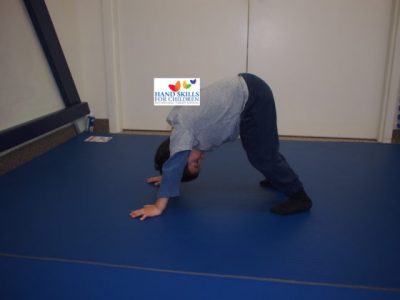By: Larissa Jones, University of Guelph-Humber Placement Student
All posts are reviewed by a supervising Occupational Therapist.
Toronto Children’s Therapy Center is appreciative of the time and research placement students commit to in writing posts for our blog.
As a Kinesiology placement student, I have researched exercises and activities in order to further develop my knowledge of sensory diets. I have discovered a wide variety of activities that an Occupational Therapist might suggest or include in a sensory diet, based on a child’s specific needs. Although I feel more educated, I was extremely overwhelmed by the number of studies, websites and articles that had differing opinions and ideas regarding what a sensory diet entails. However, one key aspect that I learned, is the importance of a very individualized sensory diet, in order for a child to sincerely benefit from this type of regime.
Although every child is unique, here are a few ideas that an Occupational Therapist might include in a child’s sensory diet at the conclusion of an observation session:
- Proprioception– Proprioception can be referred to as the body’s ability to sense movement through receptors in the joints, tendons, and muscles. This information is sent to the brain to provide a child with body awareness. Proprioception typically refers to an individual understanding and identifying where their body is in space. These receptors fire actively when a person is engaged in heavy or resistive activities. Some examples of these types of activities include:
- Push a grocery cart, stroller or heavy box
- Go to a playground for at least 30 minutes
- Jump on a mini trampoline, try some simple yoga exercises
- Animal walks- bear crawl or crab walk
- Heavy blankets at night
- Classroom chores- erasing chalkboard or wash the dry erase board
- Tie a theraband around a chair’s front legs so the child can kick it with their legs
- Pinch, roll or pull a ball of theraputty
- Carry a weighted back pack (no more than 10% of their body weight)

- Vestibular– The vestibular sense refers to the body’s ability to sense balance and movement via an organ made up of semi-circular tubes near the inner- ear. The vestibular sense responds to a change in your head position. It also contributes to balance and equilibrium. When this system is not functioning properly, a child may feel over stimulated or under stimulated by the sense of movement. Vestibular movement may be calming, soothing or even overwhelming for some children. In this case, it is important to consult with an Occupational Therapist in order to help identify what type of activities to use with your child and how to effectively grade them. This may be the reason your child is constantly in need to move or is fearful of movement. In the circumstance that they might be fearful, progressions and modifications would be implemented to help support the child’s needs. Some examples of these types of activities include:
- Jumping rope or walking along an “imaginary” balance beam
- Summersaults or gymnastics-type moves
- Dancing, marching, twirling
- Playing on a scooter board
- Spin on an office chair
- Swaying in a hammock or riding a rocking horse
Every child has an individual sensory profile and some children may even present with a mixed sensory profile. In order to establish a sensory diet routine, that would be effective for your child, it is best to have an assessment by an Occupational Therapist. Based on your child’s profile, the Therapist will be able to provide recommendations that will meet your child’s specific needs at home, at school or in new surroundings.
